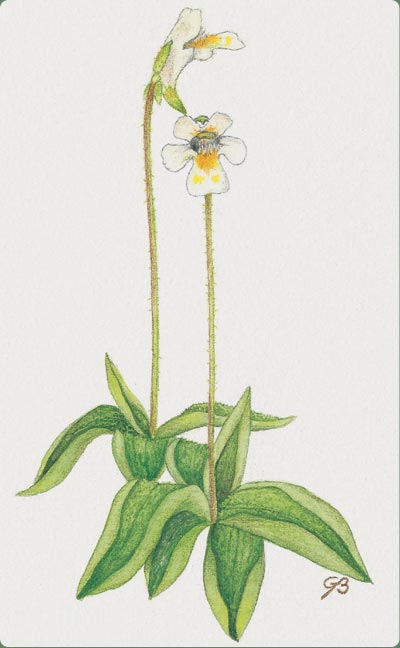Pinguicola alpina Pinguicula alpina L. - Alpine butterwort
Family: Lentibulariaceae This is a small carnivorous plant widely present in the European mountains and in the northern part of this continent and of Asia. It is characterized by succulent involute sticky leaves with tiny glands whose aim is to attract and capture insects which are digested by enzymes produced by other glands so as to provide mineral nutritive substances.
The flowering stem has no leaves and is provided with glandular hairs. It is 5-15 cm high and it bears only one white flower with two yellow spots on the lower lip and a cone-shaped spur. It is the only species of its family which keeps its root system even in winter.
The species is present in various vegetable associations, generally but not only, on calcicole substrata characterized by availability of water and by low vegetation: alkaline fens, damp meadows, spring and spring seepage habitats, brook banks, pioneer alpine pastures at an altitude of 2,500-2,600 m.
Its presence in the Resurgence fens is of great importance from the naturalistic point of view. Indeed, it can be found at a low altitude a few kilometres from the Adriatic Sea, as a relict of the alpine plants coming to the lowland in the ice age.
In the alkaline fens of Friuli-Venezia Giulia the species shares the biotopes (in the association Erucastro-Schoenetum) with the Primula farinosa. It can be found on peaty and gravely soils, rich in calcareous water for most of the season, but never flooded, and poor in nutrients. Among the ice age relicts of the Resurgence area, it is the one which best tollerate the present climatic changes.

G. Bolognini © |

|